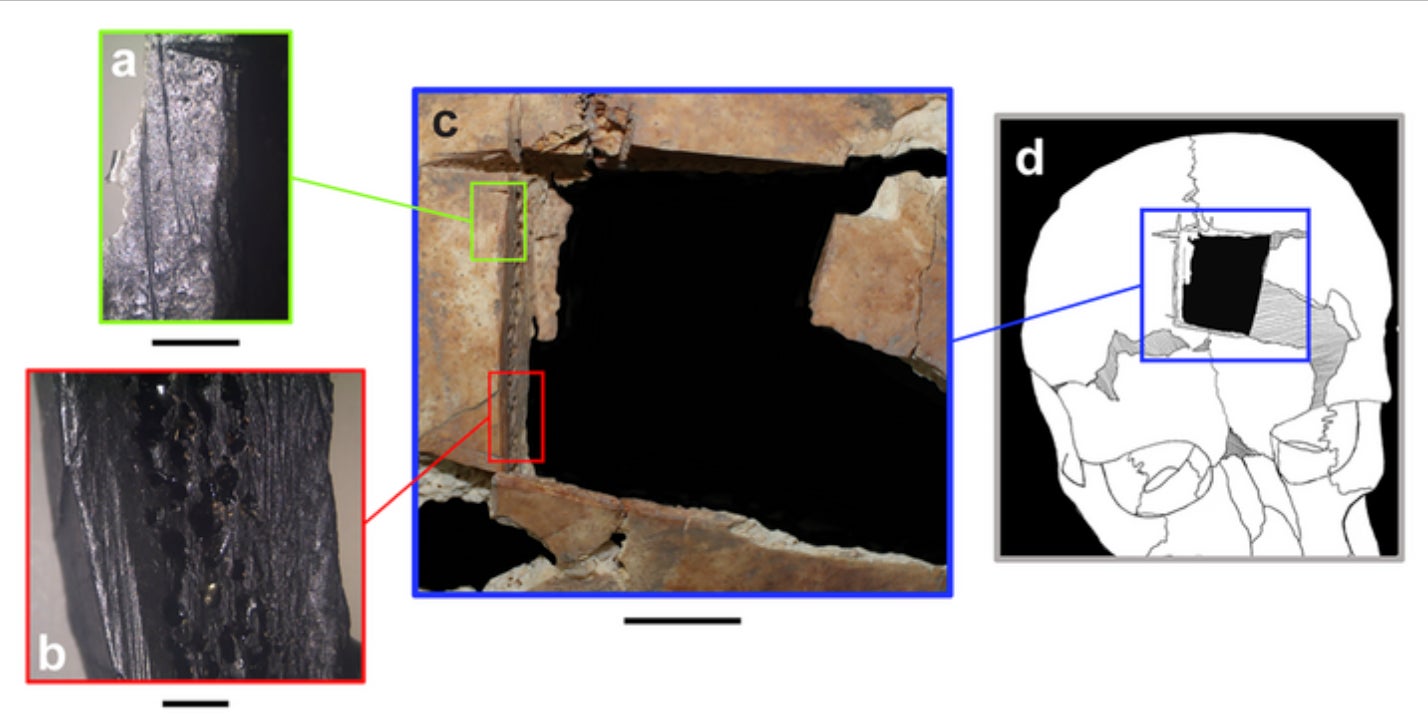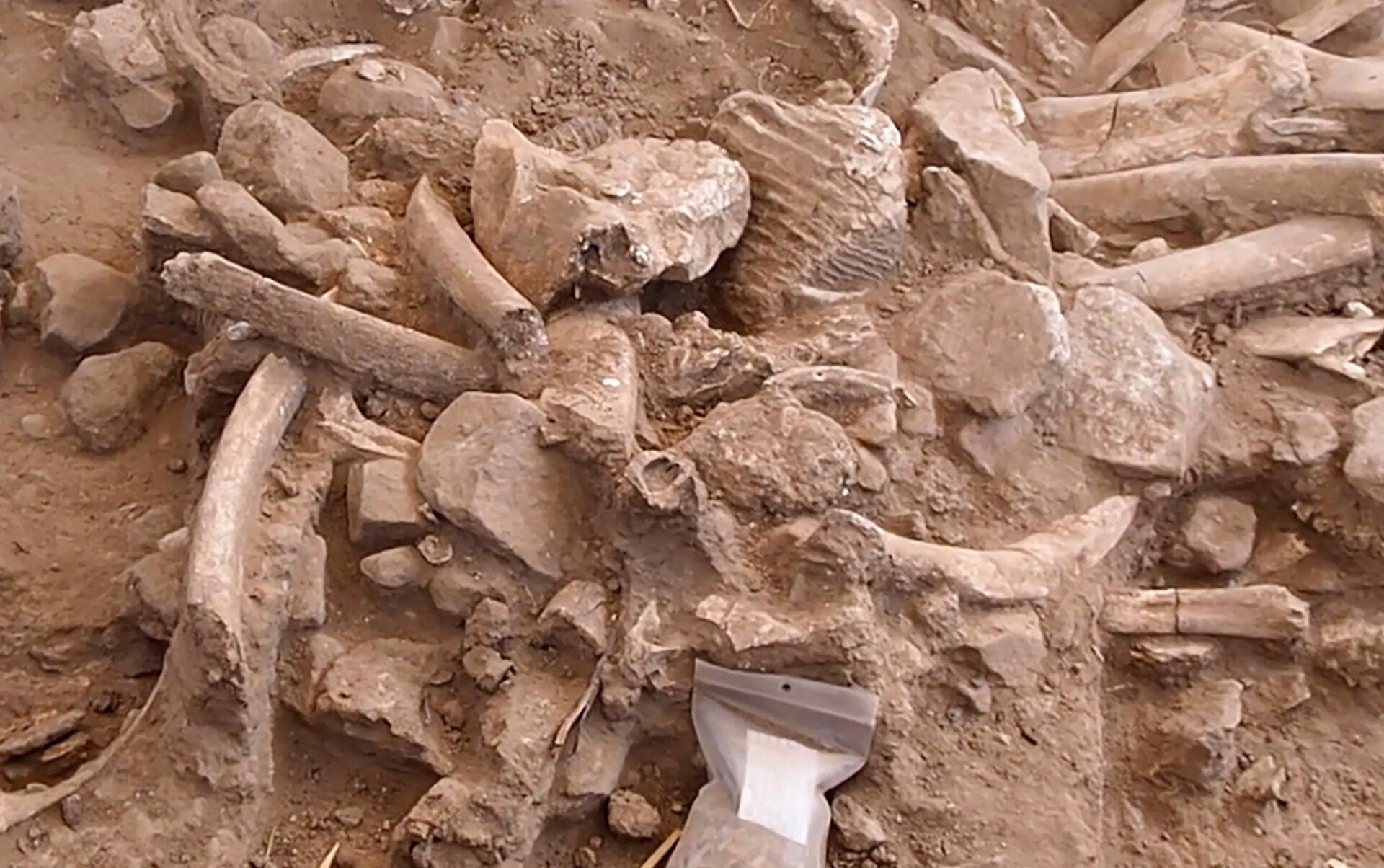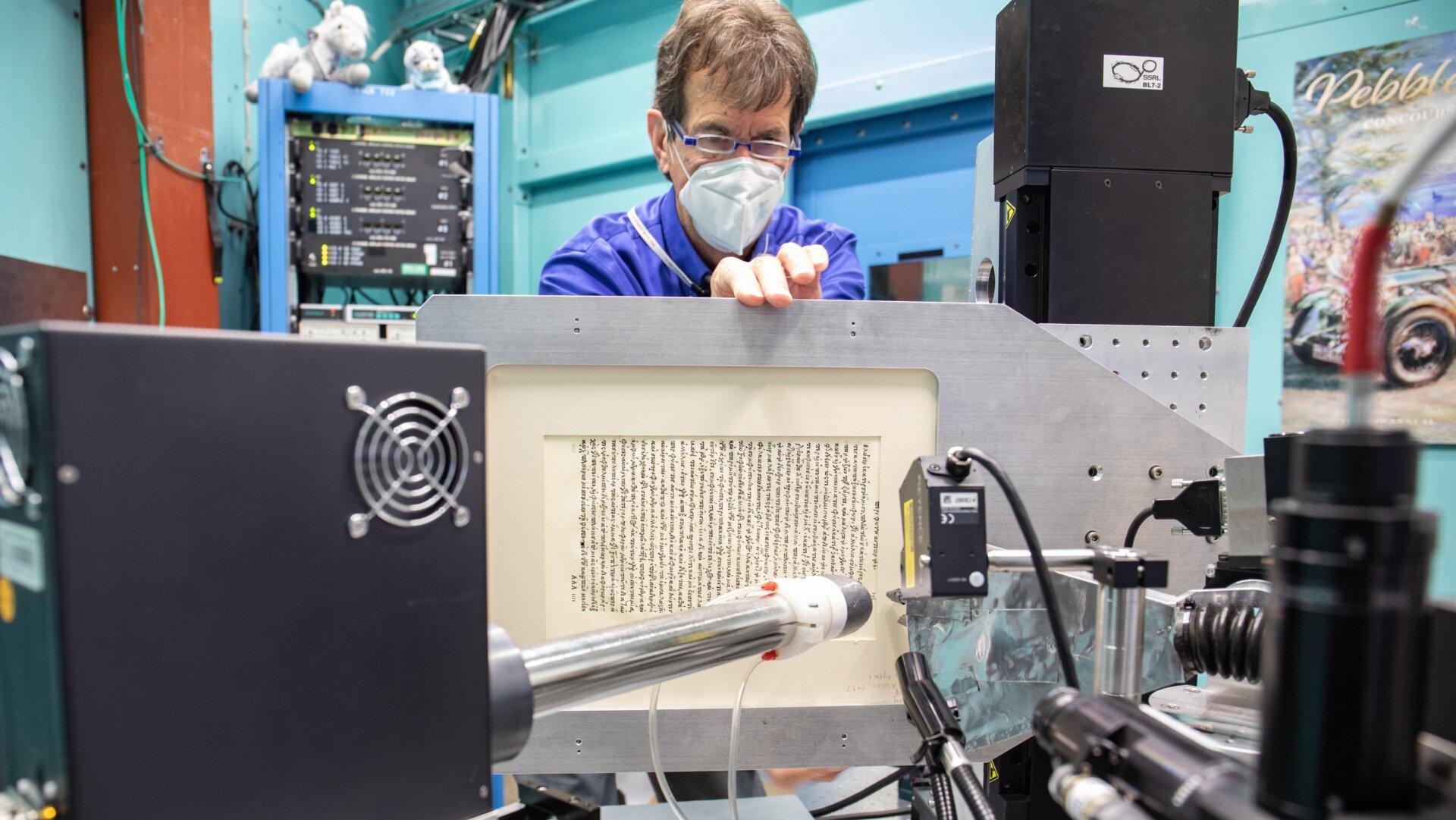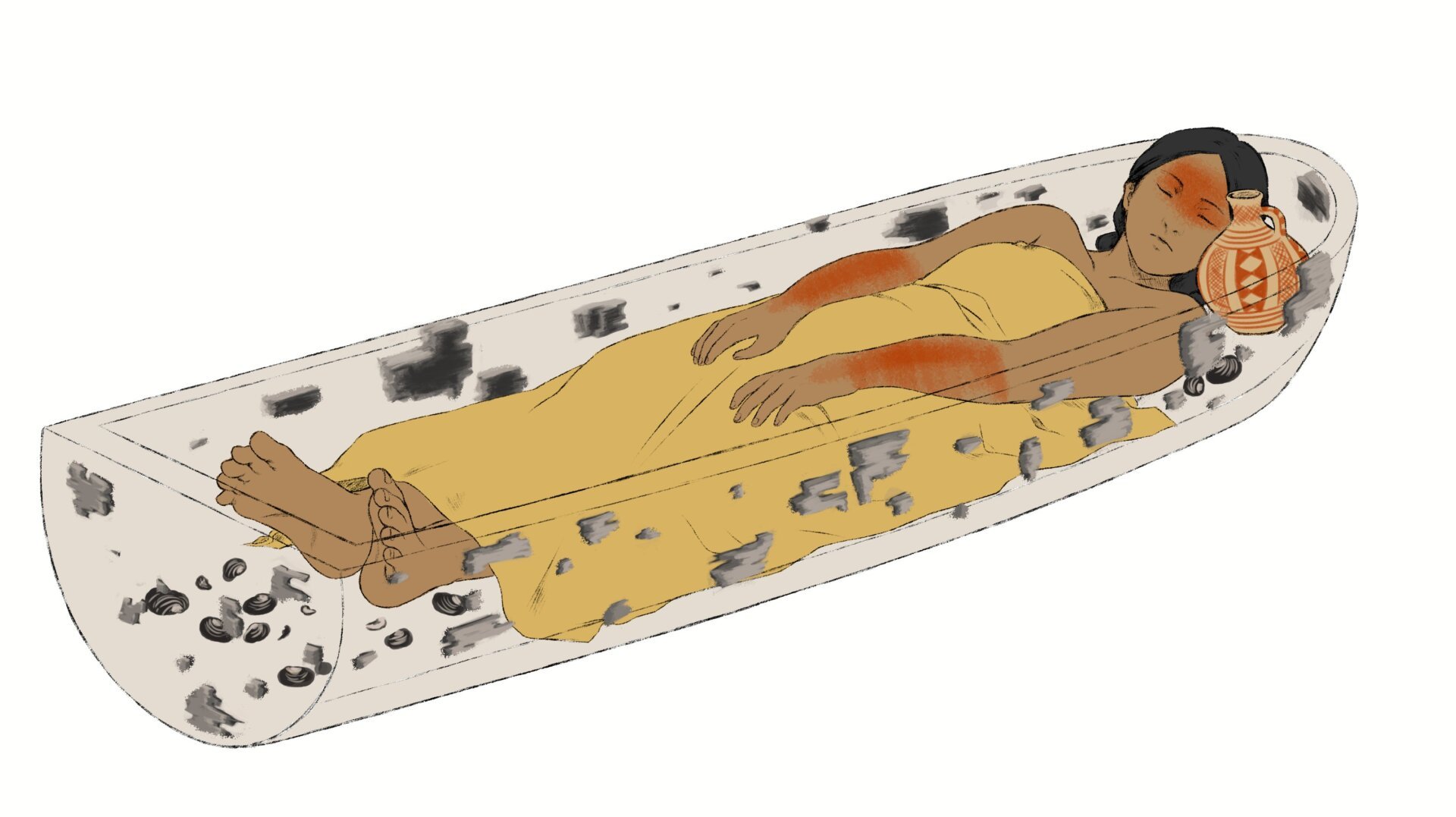The Grotte Mandrin rock shelter in southern France has yielded a remarkable discovery, pushing back the known presence of Homo sapiens and their use of bow and arrow technology in Europe by a significant 10,000 years. Over 850 stone artifacts, including meticulously crafted points, blades, and flakes, alongside previously discovered 54,000-year-old human teeth, offer compelling evidence of early human ingenuity.
This groundbreaking find, detailed in a study published in Science Advances, builds upon earlier research confirming the ancient human presence at the site. The analysis of these artifacts reveals a sophisticated understanding of projectile weaponry, significantly predating previous estimates for the adoption of such technology in Eurasia.
Early Homo Sapiens and Advanced Archery
The Grotte Mandrin discovery is twofold in its significance. First, it establishes the earliest known presence of Homo sapiens in Europe, predating previous evidence by 10,000 to 12,000 years. Secondly, the functional analysis of the lithic artifacts demonstrates a mastery of archery, pushing back the origins of this advanced technology by an astounding 40,000 years.
The variety of sharp, worked stones unearthed at the shelter, ranging in shape and size, provided crucial clues to their function. Larger points suggest their use on spears, while the smaller “micropoints” align with the characteristics of bow and arrow technology.
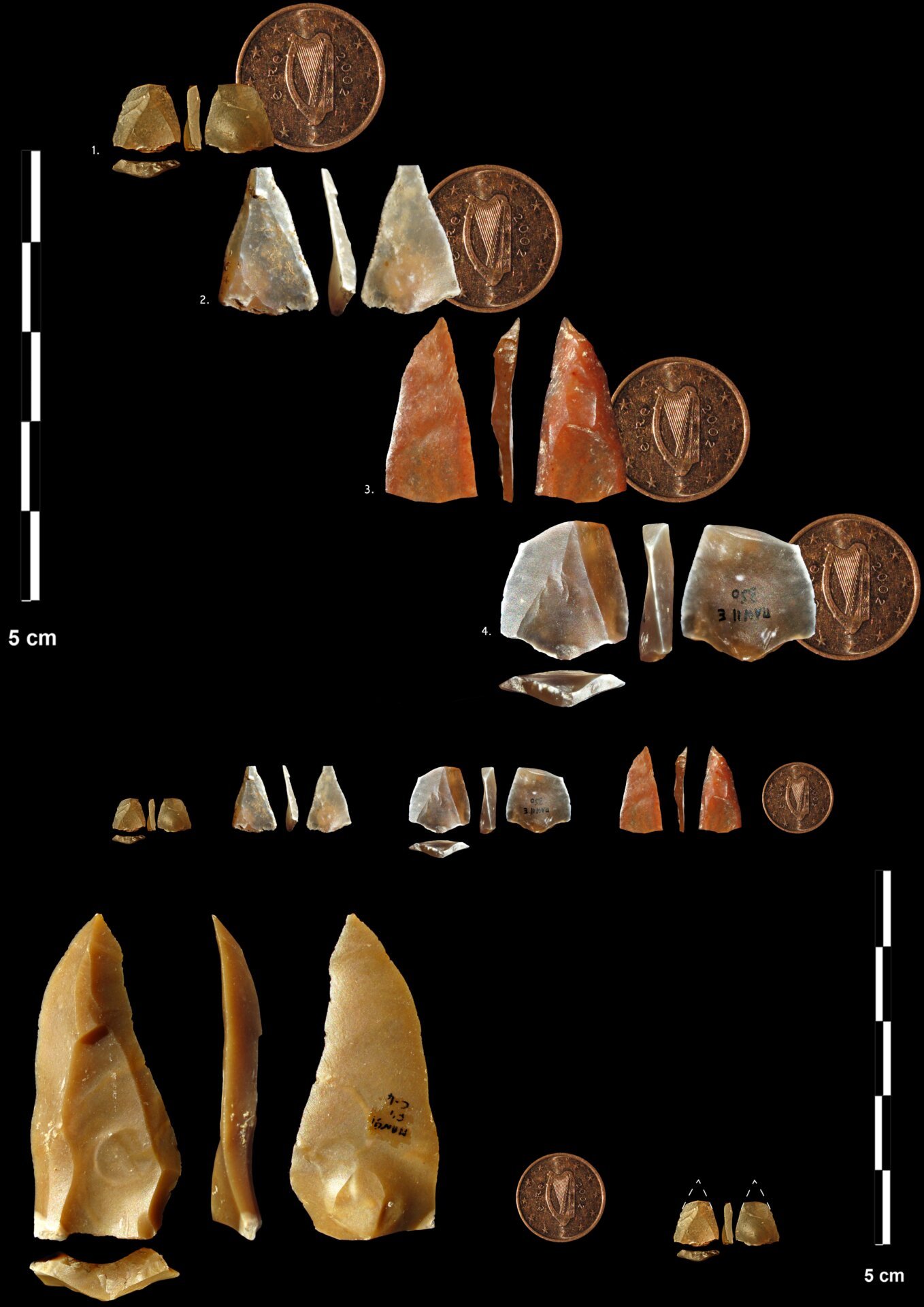 Some of the worked stones from Grotte Mandrin (1 Euro cent for scale)Micropoints and other stone tools discovered at Grotte Mandrin, illustrating early projectile technology. (Scale: 1 Euro cent)
Some of the worked stones from Grotte Mandrin (1 Euro cent for scale)Micropoints and other stone tools discovered at Grotte Mandrin, illustrating early projectile technology. (Scale: 1 Euro cent)
The Challenge of Perishable Materials
While the stone points strongly suggest the use of bows and arrows, direct evidence of the bow itself remains elusive. This is largely due to the nature of the materials used in bow construction—wood, fibers, leather, resins, and sinew—which are rarely preserved in Paleolithic sites, making archaeological identification difficult.
Homo Sapiens, Neanderthals, and the Bow and Arrow
The arrival of Homo sapiens in Neanderthal-inhabited territories coincides with the emergence of the bow and arrow. This advanced weaponry, offering a ranged advantage over the Neanderthals’ close-contact spears, may have played a significant role in the dynamics between the two groups.
The disappearance of Neanderthals from the fossil record around 40,000 years ago wasn’t a result of direct extermination by humans. Genetic evidence suggests interbreeding between the two species, with Neanderthal DNA persisting in the modern human genome. It’s more likely that Homo sapiens gradually absorbed the Neanderthal population.
Further Research and Discoveries
Continued analysis of existing archaeological sites, coupled with the discovery of new ones, is crucial to further understanding the complex interactions between Neanderthals and Homo sapiens during this pivotal period of human history. The Grotte Mandrin findings represent a significant step forward, offering a glimpse into the technological advancements and migratory patterns of early Homo sapiens in Europe.
In conclusion, the Grotte Mandrin discovery illuminates not only the early arrival of Homo sapiens in Europe but also their sophisticated use of projectile technology. The evidence of bow and arrow use, significantly earlier than previously thought, provides valuable insights into the adaptive strategies and potential interactions between Homo sapiens and Neanderthals during this transformative era.




